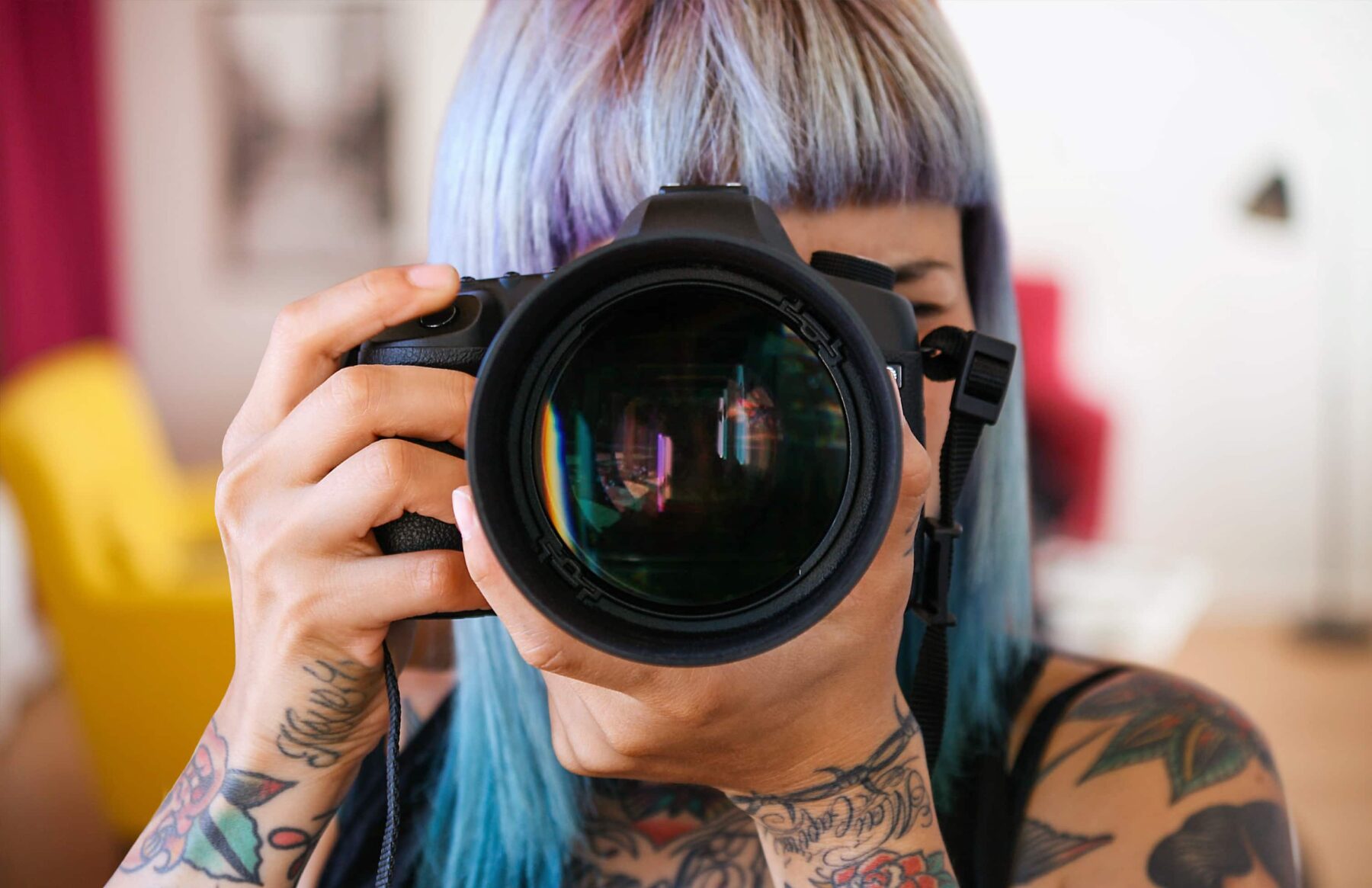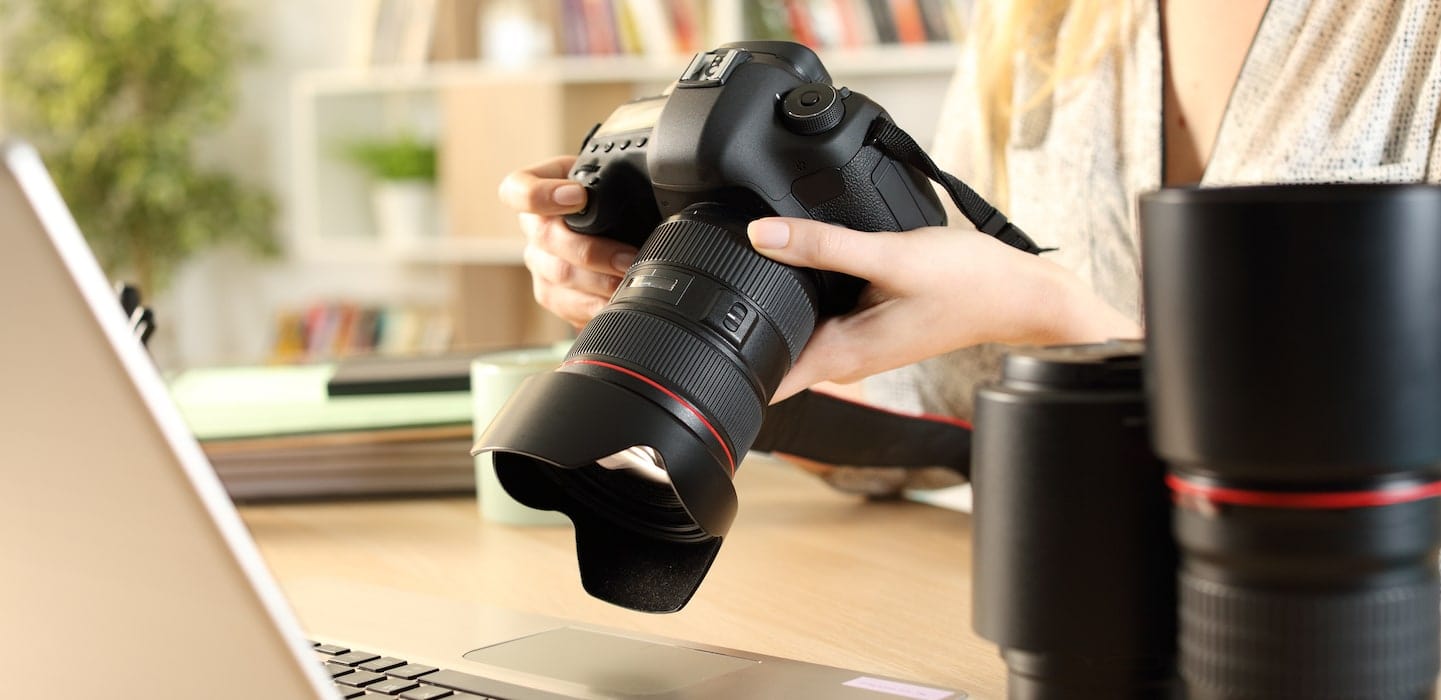So you want to become a professional photographer—cool. Perhaps you studied photography in school while getting your bachelor’s degree for another career, or maybe you’ve been getting praised for your social media feed and are looking to monetize your hobby. Whatever your background, there are certain steps you need to take to become a successful professional photographer.
At your heart, you’re a creative, especially with digital cameras. You excel at materializing an expression that perfectly captures someone’s essence, and at framing objects and landscapes from exactly the right angles. With this short guide, learn how to use your eye for detail to launch a successful small photography business. Let’s get going.
Zooming in on a specialization
The first step to becoming a professional photographer is to hone your skills in a specific area of photography. While you may be happy anytime you’re behind the lens, you’ll want to specialize your services to find your niche in the local market. Consider:
- What’s your passion? Do you prefer snapping portraits, or architectural exteriors? Wildlife or sports?
- Would you prefer to shoot other people’s events, or to shoot in your a studio doing portrait photography?
- What kind of equipment and space will you need to do what you love?
- What photography businesses exist in your immediate area?
- What kind of photography career is most in demand?
If you want to photograph in the wedding industry, you need to show proof of your skill in this area before clients will entrust you to shoot this monumental day. Likewise, if a museum is looking for new images for their website, they’ll want proof that you’re skilled with managing light and composition in interior settings. When you decide to specialize in a single area, it enables you to assemble a portfolio that shows potential clients the quality shots they can expect when working with you.
Tip: To begin assembling your portfolio in your chosen field, offer to shoot friends (or their events) for free. There’s still something in it for you: proof that you’ve got what it takes.
Focusing on the (business) details
Once you’ve chosen the kind of photography you’ll pursue, it’s time to begin setting up your business. You might think that all you need is a camera and a checking account to deposit your payments in. However, to set yourself up for long-term success, you’ll need to take a few more steps:
Decide on a business structure – As a freelance photographer, you may choose to create a legal business entity in your state. For single-member businesses, a sole proprietorship or a Limited Liability Company (LLC) are usually a great choice (especially when starting out)
Create your website – Your biggest asset is your artistry—your eye. Make sure you use your visual fluency to design an attractive website that reflects the mood and tone of your work. Your site should be easily navigable, with an online portfolio featuring your best photographs
Set up your social media presence – Today, people are just as likely to find freelancers on social media (especially photographers) as they are through web searches. Your Facebook, Instagram, and other social media channels are a great way to showcase your photography and build a following. For best results, post at least once a week, and be sure to actively engage with your followers in the comments.
Protecting your business
Once you start booking shoots, make sure your business is legally protected. As a photographer, you might not think you could end up in legal trouble. What can you do wrong, after all, besides take a bad photograph? Unfortunately, in photography (as in all lines of work), there’s more legal risk than you may imagine.
For example, did you know you need a photo release form before publishing images of your clients that you’ve taken during scheduled shoots? Without their proper permission, you could end up getting sued.
In addition to failing to get a client’s proper permission (to use their likeness in your art and promotional materials), there are other ways you might find yourself with an unhappy, litigious client on your hands.
Imagine you’re an entertainment photographer who’s been booked to take headshots for an up-and-coming actress in advance of a callback. The casting director loved her audition but needed a current headshot to show to network executives. If you’re swamped with work and photo editing and fail to ship her photographs before the callback, she might lose the role and could then claim you were negligent—stating that you’re directly responsible for her financial loss.
That’s why all photographers need general liability insurance and professional liability insurance. But what’s the difference?
General liability insurance – This kind of insurance can protect you against third-party claims of bodily injury, medical costs, or property damage. A slip-and-fall incident in your photography studio or accidentally damaging your clients’ property can leave you financially liable.
Professional liability insurance – This kind of insurance can protect you if you’re found guilty of negligence or mistakes during the course of your work. Also called errors & omissions (E&O) insurance, this kind of coverage can help you with legal costs and payouts should your client claim your work has led to their financial loss.
Thimble’s Photography Insurance
As you begin to grow your photography business, make sure that a single mistake or mishap doesn’t end your business before it’s skyrocketed.
Protect yourself with Thimble’s Photography Insurance.
Our insurance is fast, easy, and flexible to accommodate freelance photographers’ needs. Choose between daily, weekly or monthly policies—pay for coverage when you’re behind the lens, and save when you’re not.
When you’re ready to sign up, download the Thimble mobile app or click “Get a quote.” Once you enter your ZIP code, crew size, and a few details related to your business, you’ll get a quote instantly. Make your purchase in just 60 seconds. It’s that fast.
Click, click, click, you’re a professional
Now that we’ve zoomed you through the process, you don’t have to shutter when it comes to becoming a professional (okay, we’ll stop). Remember to:
Choose a niche – Try and focus on one specific area of photography. This way, you can develop a certain skill set and book lucrative gigs. It doesn’t mean you need to be a wedding photographer forever (unless you love love and that’s your passion!), it means you can fill a niche and position your business.
Set up your business – Decide on a business structure, create your website, and establish a presence on social media. You’re your own marketing. Showcase your work and stay active with your following. People will look to these platforms to evaluate your talent.
Protect your business – From photo release forms to small business insurance, be sure that your practice is safeguarded. Things can and do go wrong on the job. Having the right protection not only mitigates the consequences (should a claim be filed against you) but reinforces your professionalism.
Just by reading this page, you’re ahead of the game with your knowledge of how to build a secure, sustainable photography business. Time to put that knowledge to work! Now get going.








